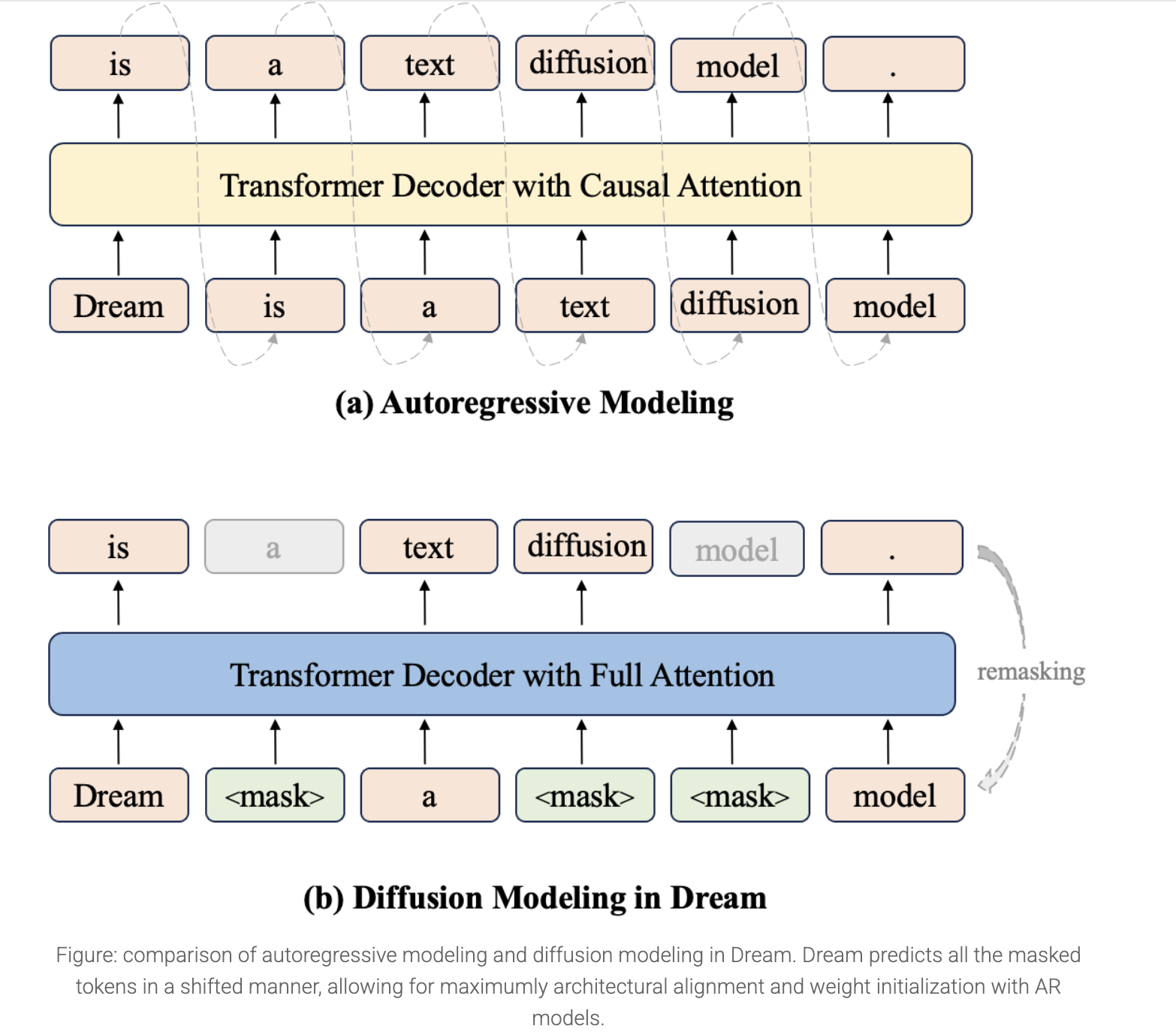
Overview of Dream 7B: A Revolutionary Diffusion Reasoning Model
Introduction to Large Language Models (LLMs)
Large Language Models (LLMs) have significantly changed the landscape of artificial intelligence, impacting various industries. Traditional autoregressive (AR) models like GPT-4 and Claude have dominated text generation, but they exhibit limitations in complex reasoning, long-term planning, and contextual coherence. These limitations hinder their effectiveness in advancing technologies such as embodied AI and autonomous decision-making systems.
The Shift to Discrete Diffusion Models
Discrete diffusion models (DMs) have emerged as a viable alternative to AR models. Unlike AR models that generate text sequentially, DMs process sequences in parallel from a noise-influenced state. This parallel processing offers several benefits:
- Enhanced Contextual Understanding: Bidirectional modeling improves overall coherence.
- Flexible Generation: Controlled generation is achieved through iterative refinement.
- Efficient Sampling: Accelerated mapping from noise to data enhances performance.
Introducing Dream 7B
Recently, the University of Hong Kong and Huawei Noah’s Ark Lab unveiled Dream 7B, the most advanced open diffusion model to date. This model not only matches but often surpasses similarly sized AR models in various tasks, including mathematics and coding. With superior zero-shot planning capabilities and inference flexibility, Dream 7B outperforms larger models like DeepSeek V3, showcasing its potential for structured problem-solving.
Technical Specifications
Dream 7B is trained on an extensive dataset of 580 billion tokens, which includes diverse sources such as Dolma and OpenCoder. Its architecture supports:
- Powerful bidirectional context processing.
- Capabilities for arbitrary-order generation and infilling.
- Adjustable quality-speed tradeoffs during inference.
Performance Evaluation
Dream 7B was evaluated on tasks with varying levels of difficulty, such as Countdown and Sudoku, and consistently outperformed comparable baseline models, including LLaDA and Qwen2.5. Even against DeepSeek V3, Dream 7B demonstrated effectiveness in solving multi-constraint problems.
Practical Applications in Business
Organizations can harness the advantages of AI and models like Dream 7B to enhance their operations:
- Identify Automation Opportunities: Pinpoint processes that can benefit from automation for increased efficiency.
- Enhance Customer Interactions: Use AI to improve customer service and engagement.
- Define KPIs: Measure the impact of AI investments to ensure they contribute positively to business outcomes.
- Start Small: Implement AI in pilot projects, analyze results, and gradually scale.
Conclusion
Dream 7B marks a significant advancement in diffusion language models, showcasing efficiency, scalability, and flexibility. Its strengths lie in advanced planning and inference capabilities, presenting a compelling alternative to traditional autoregressive models. By integrating such advanced AI technologies, businesses can enhance their operational efficiency and decision-making processes, leveraging the full potential of artificial intelligence.



























